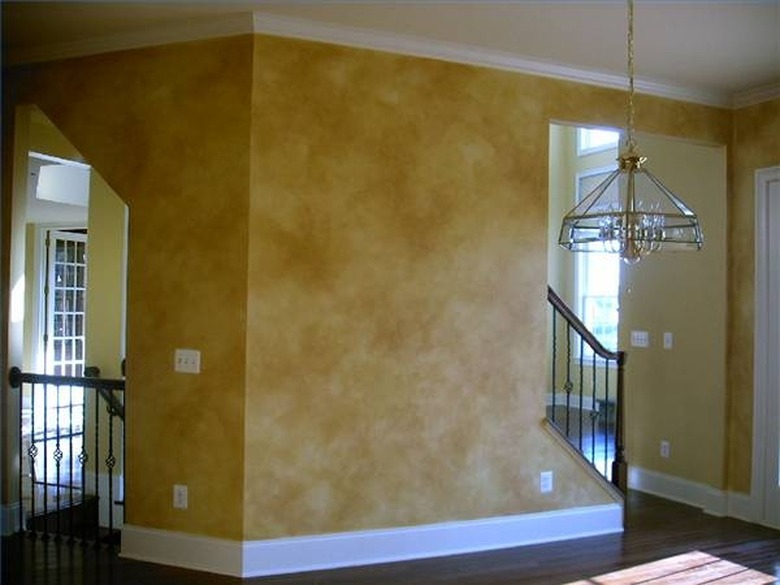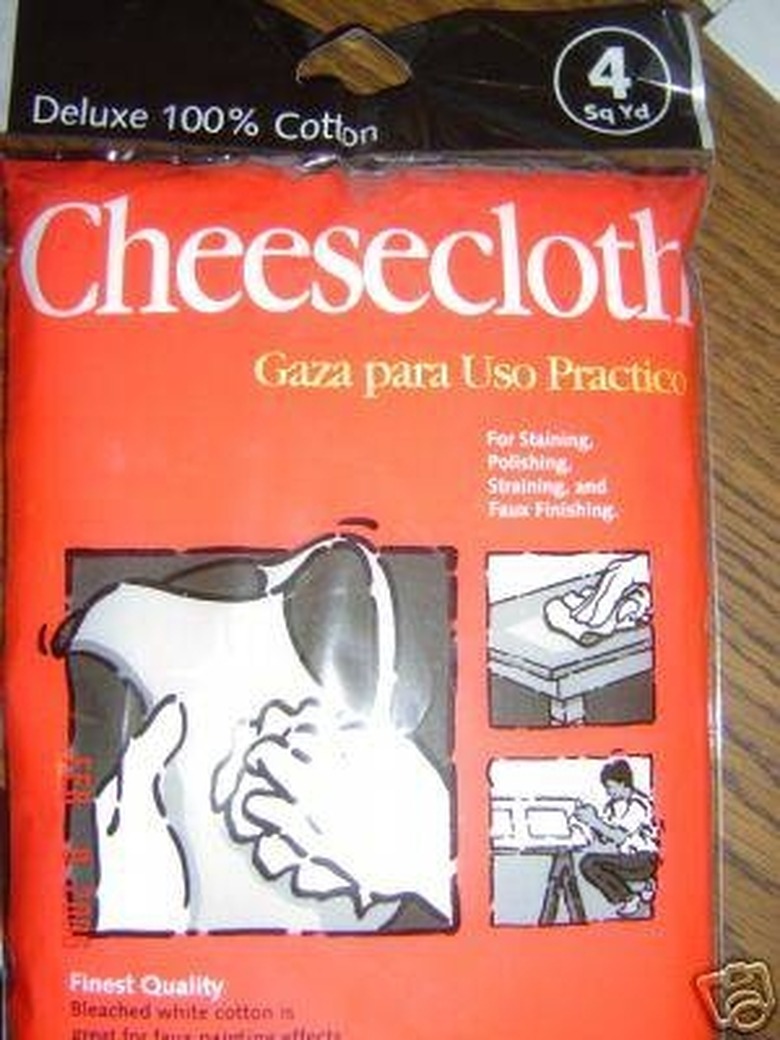Cheesecloth Technique For Faux Finish
Faux finishes in painting are designed to look like anything but flat paint; wood grain, fabrics, paper and stone-like finishes are all common. Working with cheesecloth on paint will result in a finish that looks like paper or fabric. Cheeseclothing can be done with one color of paint or multiple layers and colors of paint and glaze.
Prep Your Wall
Prep Your Wall
Prepare your wall for painting and treatment by washing it and filling in any holes in the plaster or drywall.
Choose a Color Scheme
Choose a Color Scheme
Pick a color scheme for your wall by looking at paint swatches. Select one or two paint colors and a glaze, if you want to have a mixed matte-shiny finish at the end. You can also just choose one paint color to start with and add additional layers later of you decide you want a more complex look. Experiment with sample sizes of paint on white paper or cardboard if you want to try out a few ideas before moving to the wall.
Using Primer
Using Primer
If the wall has a dark color on it already and you are moving to a different color, paint the wall with primer and let it dry. If the wall is white or light, you can skip the primer step as long as the surface is smooth and even.
Cheesecloth It
Cheesecloth It
Apply the first coat of colored paint and let it dry. When it's dry, apply the second coat of colored paint. Dip your cheesecloth (you can use true cheesecloth for this or any textured lint-free fabric, even an old T-shirt twisted up for texture) into the paint or the glaze if you're using glaze. Press and dab the cheesecloth on the wall while it's still wet from the second coat of paint. Wipe the wall and create texture by rolling and moving the cloth around on the paint. When the cloth starts to get dry, re-dip it and continue. Try to use the same basic technique for the entire wall or room—too many kinds of texture will look messy rather than like an even faux finish. Try not to make just one pattern, though, that's repeated everywhere—you want some variety within a set of basic textures.
Adding More Depth
Adding More Depth
Let the paint dry. If you want to add an additional color or glaze, now's the time. You can add these over the base coat using the same technique described above.

